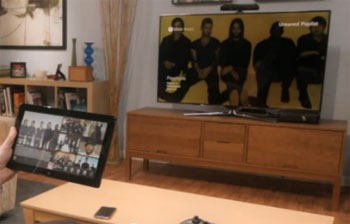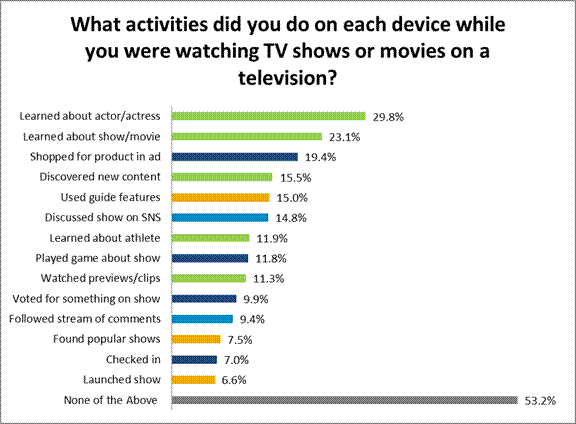A growing number of broadcasters have been promoting the use of “second-screen” apps as a way of boosting the enjoyment of their shows, but consumers aren’t buying into them, according to new research from the NPD Group.
 |
| Second-screen apps unappealing to most viewers, says NPD Group |
NPD’s Digital Video Outlook Second Screens Report shows that while the vast majority of households in the US possess at least one device capable of operating as a “second-screen”, most people use them for anything but interacting with whatever programme they happen to be watching. As many as 87% of people who own such a device will use it while watching TV, but the vast majority of them will spend their time sending emails, chatting, browsing the web or social media, rather than using second-screen apps.
Among viewers that own second-screen devices, only 47% have interacted with such apps, which suggests that broadcasters will have to come up with fresh ideas for interacting with their viewers if they want second screen usage to take off.
Of the viewers that do use second-screen apps, check-in rewards, play-along games, live voting and other interactive features were found to be the most effective ways of engaging with audiences. Other common interactions include using the apps to learn about the programme in question, or to discover more about the show’s actors and actresses.
Apps such as zeebox and Viggle, which are especially designed to enhance second-screen engagement, were particularly unappealing to viewers, with less than 10% of people owning a second-screen device using these services. Instead, those who do like to engage in second-screen activities generally prefer to use social networks, IMDb and Wikipedia in order to do so.
 |
| Second-screen app usage among viewers |
Russ Crupnick, NPD’s Senior Vice President of Industry Analysis, said that while viewers were happy to use second-screen apps to discover more information about the programmes they are watching, immersive applications and games were generally not appealing to viewers.
“The problem is that this situation might create a diversion from advertising, and so broadcasters, advertisers and content owners will need to make a combined effort to come up with a second-screen experience that viewers find appealing,” said Crupnick.
Aside from learning about the TV shows and their actors, other popular activities included shopping for products seen on TV commercials, discovering new content, using guide features, and discussing the shows on social media networks.
As for the devices viewers are accessing them second-screen apps with, NPD says that desktops and laptops are the most common, used by 60% of viewers, followed by smartphones (55%) and tablets (49%).
Source: NPD Group